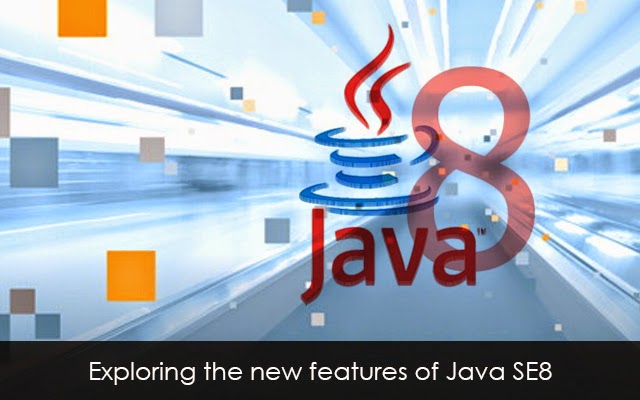On 18th
March 2014, Oracle released Java Platform, Standard Edition 8 as a
major feature release. Java SE8 comes with several features that were
originally planned for Java SE7 but later deferred. While migrating to
the most recent version of Java, you must understand the new features
and enhancements for both Java programming language and Java Virtual
Machine (JVM).
Overview of Major New Features of Java SE8
Lambda Expressions
Oracle
has included Lambda Expressions in Java SE8 as a new language feature.
The new syntactical capabilities enable Java programmers to carry out
functional programming. They can use Lambda expressions to treat code as
data, or functionality as a method argument. At the same time, the
feature enables developers to express instances of single-method
interfaces in a more compact and simplified way. Lambda Expression
further help programmers in creating and maintaining custom classes
without writing longer lines of code.
The Stream API
The
Stream API enables programmers to manage a variety of collections
including maps, lists and sets. Further, it does not require developers
to write explicit looping code to deal with individual items in a
collection. The feature further improves the performance of large and
complex datasets by allowing developers to break the processing into
multiple CPUs.
Date and Time API
Java
SE8 further comes with a new API to effectuate management of date and
time without using the older classes. The older classes still included
in Java Runtime. But Java programmers can use the new API to effectively
manage time zones, local dates and times, and calculating difference
between different times. Further, the new capabilities make it easier
for Java developers to streamline their code.
Nashorn JavaScript Engine
The
Nashorn JavaScript Engine is included in Java SE8 for the first time.
The engine enables developers to write code in JavaScript, and then
integrate the code in Java classes and objects. It works with a native
JVM to implement a lightweight high-performance JavaScript runtime
within Java. The developers now have option to use jrunscript
command-line tool to create freestanding JavaScript applications. As
JavaScript has become an integral part of web ecosystem, the integration
will make it easier for web developers to avail the benefits of the
latest version of Java programming language.
Bulk Data Operations for Collections
Java
SE8 comes with two distinct packages to effectuate creation and
manipulation of bulk data operations for collections, i.e.,
java.util.stream and java.util.function package. Despite being identical
to an iterator, the stream has additional functionality to facilitate
collection processing. The developers also have option to use streams in
both serially and parallel. At the same time, the java.util.stream
package also supports a number of useful functions including count, min,
max, filter, limit, collect, reduce and substream.
Security
Java
SE8 is also designed with several features to optimize the security of
applications. Along with stronger algorithms for password-based
authentication, it also implements the SecureRandom API more
efficiently. The better implementation of SecureRandom API resolves the
issues related to blocking and non-blocking system calls.
New Tools
Java
SE8 also comes with a set of tools to help programmers in creating
modern applications. For instance, programmers can now use the enhanced
currency API to manage and accumulate values in multiple threads. They
can use new tools to aggregate integers, doubles, lungs and similar
numbers. Likewise, Java SE8 provides new tools to create delimited lists
in the string class. The programmers can further use new tools to
effectively detect null situations.
On
the whole, the Java SE8 comes with several new features to support
easier and faster application development. Further, the features aim to
make programmers, while enhancing the way they write Java code. So
programmers can now migrate to Java SE8 to rapidly create modern and
user-friendly applications.You can get in touch with a Java web development company who can help you develop web apps that are stable, scalable and secure.
We provide Java programming solutions. If you would like to hire Java software developer for your development needs, please contact us Mindfire Solutions.

